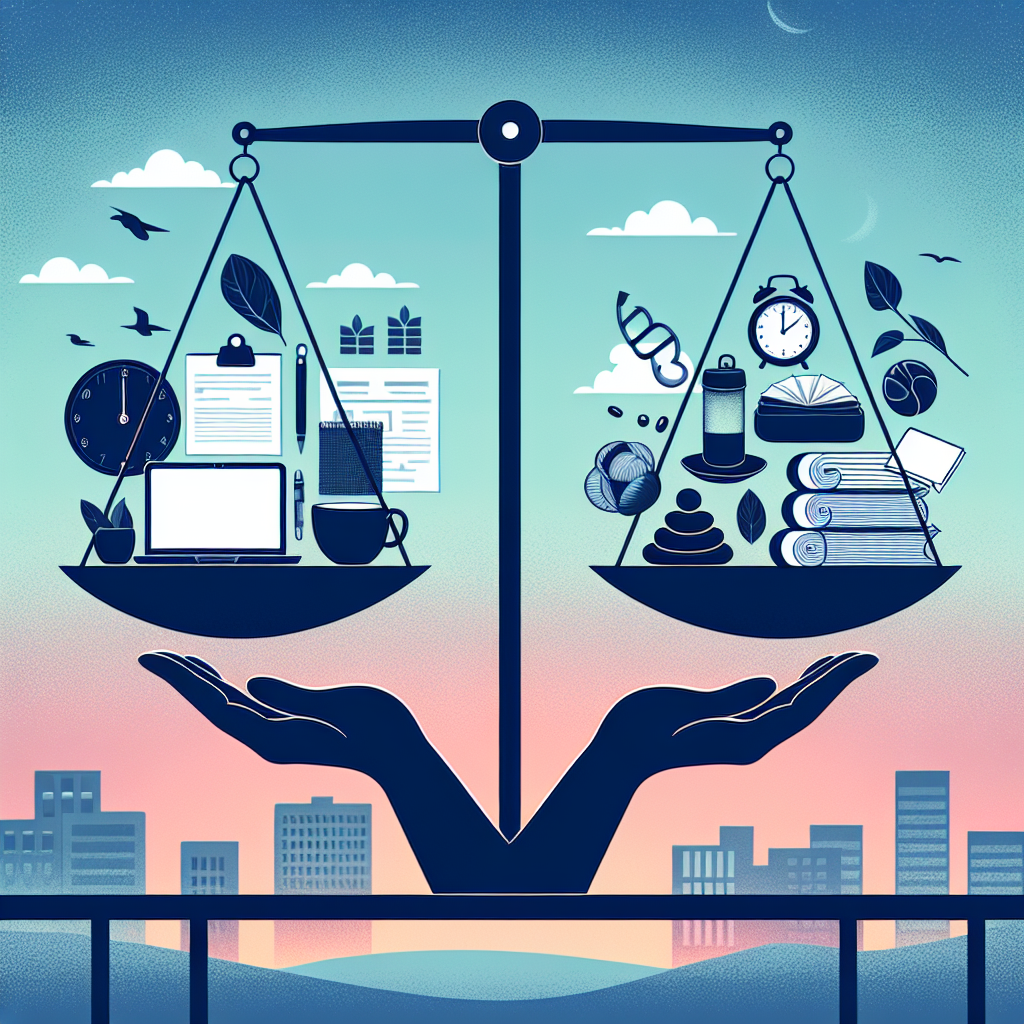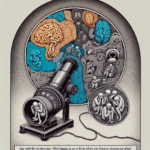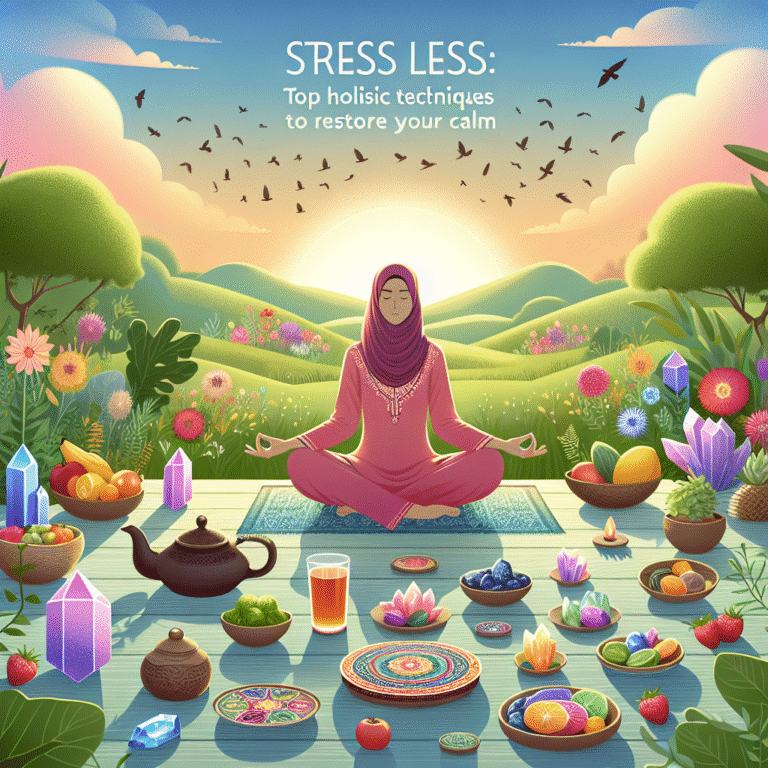
Juggling Work and Wellness: Essential Stress-Relief Practices for the Modern Professional
Introduction
In today’s fast-paced corporate world, the pressure to perform can be overwhelming. Professionals regularly face tight deadlines, high expectations, and an avalanche of responsibilities. This relentless pace can lead to increased stress levels and diminished overall wellness. The modern professional often struggles with the balancing act of maintaining career ambitions while caring for their mental and physical well-being. As we dive into the fascinating world of juggling work and wellness, we will explore essential stress-relief practices designed to empower professionals to reclaim their peace and productivity.
The State of Work-Related Stress
Before delving into stress-relief techniques, we must first understand the current landscape of work-related stress. According to a report by the American Psychological Association (APA), workplace stress has reached epidemic proportions, with 61% of adults citing work as a significant source of stress. This alarming statistic underscores the necessity of exploring effective strategies for juggling work and wellness.
Table 1: Sources of Workplace Stress
| Source of Stress | Percentage of Workers Affected |
|---|---|
| Workload and deadlines | 40% |
| Job security | 33% |
| Work-life balance | 27% |
| Colleague relationships | 25% |
| Lack of control over work processes | 22% |
The above table illustrates that the roots of workplace stress are multifaceted. The first step in overcoming these challenges is to acknowledge their existence and the impact they can have on our lives.
Practical Stress-Relief Techniques
Mindfulness and Meditation
Mindfulness practices, including meditation, have garnered attention as powerful tools for stress management. These techniques encourage individuals to focus on the present moment, providing a respite from overwhelming thoughts about work.
Case Study: Google’s Mindfulness Program
Google has long been an advocate for employee well-being. One notable initiative is its "Search Inside Yourself" program, which trains participants in mindfulness and emotional intelligence. The outcomes demonstrated significant improvements in employee satisfaction and productivity.
Analysis: Google’s investment in mindfulness is a prime example of how organizations can transform their work culture while highlighting the importance of juggling work and wellness.
Physical Exercise
Regular physical exercise is another potent stress-relief practice essential for today’s professionals. Exercise boosts endorphin levels, promotes better sleep, and enhances overall well-being.
Case Study: The 5-Minute Workplace Workout
A tech startup implemented a unique "5-Minute Workplace Workout" approach, where employees engaged in brief physical activities during breaks. This initiative led to increased productivity, reduced employee fatigue, and enhanced morale.
Analysis: The case study illustrates the critical role of movement in promoting wellness while effectively juggling work responsibilities.
The Role of Nutrition
Nutrition plays a vital role in mental and physical health. A balanced diet can mitigate the effects of stress while boosting energy levels.
Tip: Incorporate brain-boosting foods rich in omega-3 fatty acids, antioxidants, and vitamins. Examples include salmon, blueberries, and leafy greens.
Time Management
In the context of juggling work and wellness, effective time management strategies can ease the burden of responsibilities. Techniques such as the Pomodoro Technique or time blocking can streamline tasks and reduce feelings of overwhelm.
Case Study: A Multinational Corporation’s Time Management Training
A multinational corporation offered workshops on time management techniques, resulting in a marked decrease in employee stress levels and burnout.
Analysis: By prioritizing time management training, companies can foster a healthier work environment, allowing professionals to better juggle work commitments and personal wellness.
Social Connections
Building strong social connections in the workplace is another crucial element of managing stress. These relationships provide a support network that can help professionals navigate challenges more easily.
Tip: Promote team-building activities or virtual coffee breaks to foster connections among co-workers.
Creating a Balanced Workspace
Ergonomics and Workspace Design
The physical workspace also contributes to overall wellness. Ergonomic furniture and well-organized workspaces can significantly reduce stress-related physical ailments.
Case Study: Office Design Enhancements in Remote Work
With the increase in remote work, an organization redesigned its employees’ home workstations to include ergonomic chairs, desks, and lighting. Post-implementation surveys noted a decrease in neck and back pain complaints and enhanced productivity.
Analysis: The physical environment profoundly influences employee wellness, demonstrating that thoughtful design can significantly aid in the juggling act of work and well-being.
Creating Boundaries
Setting boundaries between work and personal life is essential to maintaining wellness. Establishing clear “off hours” prevents work from bleeding into personal time, allowing for much-needed recovery.
Tip: Use tools like calendar blocking to enforce work boundaries.
Implementing a Wellness Culture
For organizations to support their employees in juggling work and wellness, a culture of wellness must be established. This includes initiatives and policies that prioritize mental health, flexible working hours, and wellness programs.
Case Study: An Employee Wellness Program Implementation
A mid-sized company introduced a holistic wellness program that included fitness classes, mental health days, and access to counseling services. Employees reported decreased stress levels and increased job satisfaction.
Analysis: Building a robust wellness culture within organizations can aid employees in mitigating stress, ultimately improving performance and retention.
Leveraging Technology for Wellness
Apps and Tools
Various apps and tools can assist professionals in maintaining their mental and emotional well-being. These tools often focus on mindfulness, meditation, workout regimes, and planning.
Example Tools:
- Headspace – A popular app offering guided meditation.
- MyFitnessPal – An app focused on nutrition tracking.
- Todoist – A task management tool to streamline work responsibilities.
Monitoring Stress Levels
Wearable technology can help monitor stress levels and encourage healthy behavior changes. Devices such as smartwatches can track heart rate, sleep quality, and activity levels, providing valuable insights.
Conclusion
For the modern professional, juggling work and wellness is no longer a luxury but a necessity. Implementing essential stress-relief practices can significantly enhance not only productivity but also overall life satisfaction. By embracing techniques such as mindfulness, physical exercise, time management, and establishing a wellness culture, individuals and organizations alike can foster an environment conducive to both achievement and well-being.
Key Takeaways:
- Embrace Mindfulness: Incorporate meditation or mindfulness practices into daily routines to combat stress.
- Prioritize Physical Health: Engage in regular physical activity and nourishing nutrition.
- Manage Time Effectively: Utilize time management techniques to streamline workload.
- Encourage Social Connections: Foster relationships among colleagues to provide a support network.
- Invest in Wellness Programs: Support the implementation of a comprehensive wellness culture within organizations.
FAQ Section
-
What are some quick stress-relief techniques I can use at work?
- Deep breathing exercises, stretching, and taking short breaks can effectively reduce stress quickly.
-
How can I balance my workload and personal time?
- Prioritize tasks, set realistic goals, and establish strict work hours to maintain boundaries.
-
What are some signs that I am experiencing work-related stress?
- Signs include irritability, fatigue, changes in sleep patterns, and decreased productivity.
-
How can employers support their staff in managing stress?
- Companies can implement wellness programs, facilitate open communication, and provide flexible working arrangements.
- Are there any apps that can help with stress management?
- Yes, apps like Calm, Headspace, and MyFitnessPal can help with meditation, relaxation, and nutrition tracking.
By adopting strategies for juggling work and wellness, modern professionals can move towards a healthier, more balanced life, thriving both personally and professionally.
















